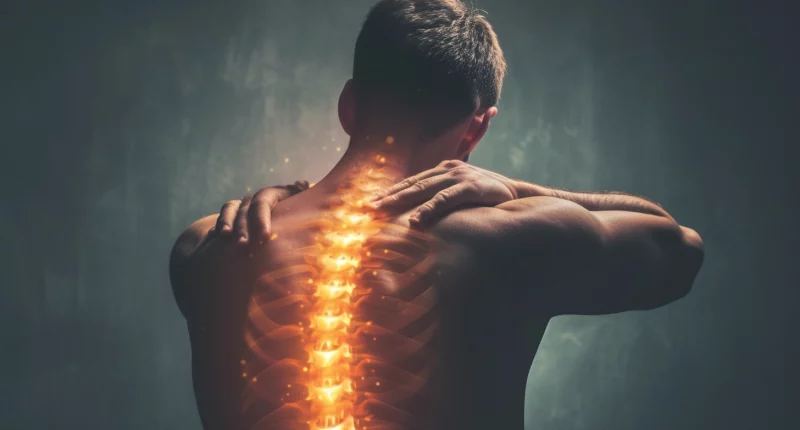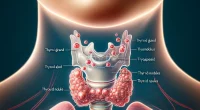Spinal trauma
What’s that?
Traumatization of the musculoskeletal system is dangerous due to damage to the bone marrow, vertebrae, and nerve endings. In unfavorable cases, it leads to a person’s disability, loss of the ability to move independently, or complete paralysis. Spinal cord injury is one of the most severe conditions in medicine, which requires urgent examination, observation, treatment, and subsequent rehabilitation.
Trauma is an external mechanical impact on tissues, the force of which exceeds the organism’s capabilities. Partial or complete disruption of the integrity of tissues leads to a decrease in their functions.
About the disease
The vertebral column is the foundation of the axial skeleton, which is reflected in the health of all organs. It is designed to cushion the entire musculoskeletal system, but its structures can be damaged by compression, stretching, excessive flexion, extension, and rotation.
In complicated cases, which account for 20-40% of injuries, the mortality rate is as high as 30%, and nearly 95% of survivors face the consequences of the injury even after treatment.
Types
According to localization and prevalence, three types of spinal injuries are distinguished.
- Damage to spinal cord structures. Such injuries are referred to as uncomplicated, as the integrity of the spinal column alone is compromised while the spinal cord remains unaffected.
- Spinal cord injury. The patient has a disruption in the structure and function of the spinal cord, but the spine remains intact.
- Spinal cord and spinal cord injuries. The most severe and unfavorable situation is damage to vertebral structures, nerves, vessels, and the spinal canal.
According to the degree of damage to the spinal cord, the impact which occurs in any back injury differentiates:
- concussion;
- bruise;
- squeezing;
- partial break;
- a complete breakdown.
Bone injuries localized in the solid structures of the spine are classified into:
- bruise;
- fracture;
- a dislocated vertebra;
- rupture of the capsular-ligamentous apparatus and intervertebral disc.
The injury itself may have the following characteristics:
- by involvement of other tissues and organs: isolated, combined (mechanical trauma of the spine with other organs), combined (mechanical trauma with thermal, chemical, etc.);
- in terms of cover disruption, closed, open, penetrating;
- by the nature of the damage: stable, unstable;
- by the mechanism of injury: compression, distraction, rotational, stabbing, gunshot.
Classification of spinal cord injuries by severity differs for different parts of the spinal column: cervical and thoracolumbar injuries are considered separately. That is due to these areas’ different mechanisms of traumatization and neurological functions.
Symptoms
The clinical picture of axial skeletal trauma depends on its localization and severity.
Some of the most common signs of spinal cord injury include:
- pain;
- swelling and hematoma;
- an unnatural pose;
- paralysis of the legs and other parts of the body;
- inability to lift shoulders, elbows, feet;
- decreased muscle sensation, numbness;
- involuntary emptying of the bladder and bowels.
Symptoms and signs of spinal cord injury differ for injuries in different parts of the spine, so the doctor can approximately determine the localization of the damage at the stage of collecting history.
Pain is a frequent but not obligatory sign of spinal trauma and even fracture. Its absence is a less favorable clinical sign, while severe pain syndrome may indicate a soft tissue tear without damage to the spinal column.
In 40-60% of patients presenting to the physician after such trauma, other internal organs are also injured. It should be considered when gathering clinically relevant information, administering first aid, and developing a diagnostic plan.
Pain syndrome and psychological stress can exacerbate spinal cord injury symptoms, adding fainting, nausea and vomiting, and tachycardia.
Reasons
Statistically, damage to the spinal column occurs as a result of:
- of automobile accidents;
- falls from heights, including on water;
- violence;
- sports.
The vast majority of patients are men. The risk of injury is higher in old age due to degenerative processes that make bones, joints, and ligaments fragile and impaired coordination of movements and reaction speed.
Diagnosis
Once the trauma patient is admitted to the clinic, there are two areas of expertise working with the patient:
- resuscitators – if there is a risk of acute and life-threatening complications;
- surgeons, neurosurgeons, traumatologists – to work directly on damaged tissues.
X-rays are the main way to examine a person with an injured spine after a doctor’s examination. It is a quick, accurate, and simple method of diagnosis that effectively identifies even the smallest damage to the vertebrae and outlines the tactics of further treatment.
Other radiologic studies may be required for complex trauma:
- spiral CT scan;
- MRI.
They allow an objective assessment of the spine’s stability, spinal cord compression, and the patient’s neurological status. In addition, the condition of the brain, skull, pelvis, chest, and abdominal organs is studied, and a set of laboratory tests is performed for blood composition and viscosity, the presence of toxins.
Treatment
The therapy tactics are determined after diagnostics to collect objective information about the patient’s condition.
Treatment for spinal cord injuries consists of three main steps.
- Pre-hospital. At this stage, the tasks of correcting acute disorders are solved, and pain relief, immobilization, and transportation to a medical institution with fixation of the spinal column and its sections are performed.
- Hospitalized. Once the patient is admitted to the hospital, basic therapy includes surgical intervention. Conservative therapy is aimed at fixing the spine in a certain position for tissue healing. The disadvantages of this approach are the long duration of treatment and relapse after removal of the corset. Surgery is indicated for spinal cord injuries and fragment unstable fractures.
- Rehabilitation. After tissue healing, the gradual return of lost motor functions under the supervision of specialists is necessary.
Medication methods are additional, necessary to control pain syndrome and accelerate tissue regeneration.
All treatment options are available in more than 820 hospitals worldwide (https://doctor.global/results/diseases/spinal-trauma). For example, Anterior cervical discectomy and fusion (ACDF) can be done in 31 clinics across Turkey for an approximate price of $9.5 K (https://doctor.global/results/asia/turkey/all-cities/all-specializations/procedures/anterior-cervical-discectomy-and-fusion-acdf).
Prevention
Injuries resulting from unforeseen events, such as car accidents, are challenging to prevent. In other cases, it is important to follow safety precautions:
- don’t dive into unfamiliar water reservoirs;
- use special protective equipment when playing sports;
- avoid potentially dangerous situations, e.g., traveling in the dark on unstable surfaces;
- adequately assess their physical abilities in different leisure activities.
Physical training can reduce the risk of injury to any part of the spine by building solid muscular frame grouping skills and increasing the body’s overall endurance. It does not guarantee that a person will not encounter an injury, but it can help them return to a healthy life more quickly.
Rehabilitation
Recovery is an essential stage in the treatment of serious injuries. A person’s ability to fully return to active life depends on carefully fulfilling medical prescriptions. Otherwise, chronic pain syndrome may persist, muscle atrophy may develop, and strength and endurance may decrease.
The recovery period usually includes:
- gymnastics;
- massage;
- physical therapy.
Attention is also required to the psychological state of the person. Temporary isolation from everyday life and the need to constantly perform exercises and procedures can lead to reactive depression and, in some cases, spinal cord injury, and post-traumatic stress disorder.


